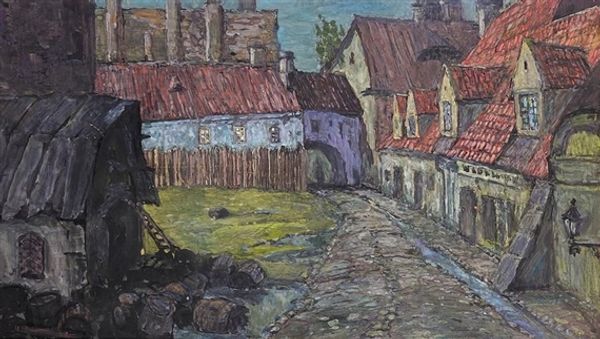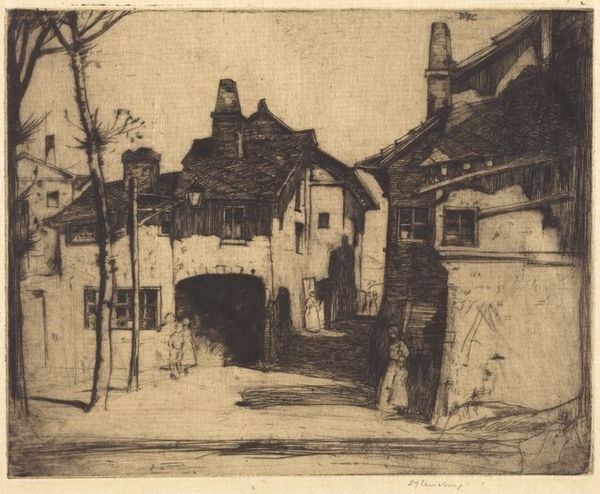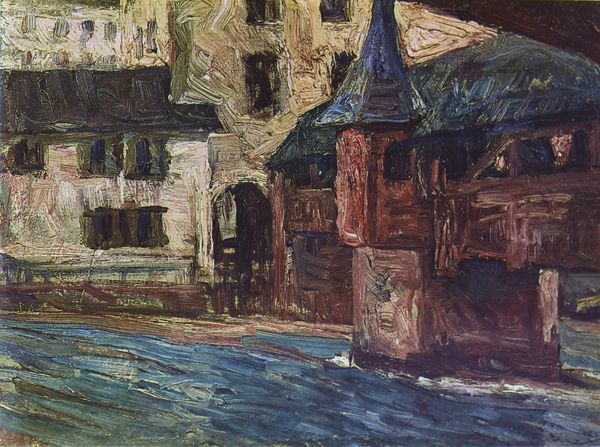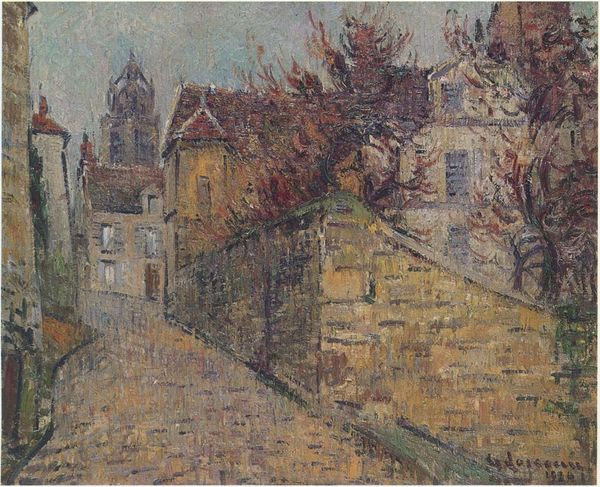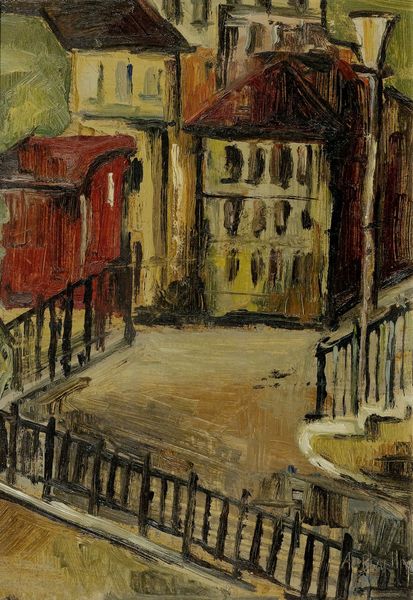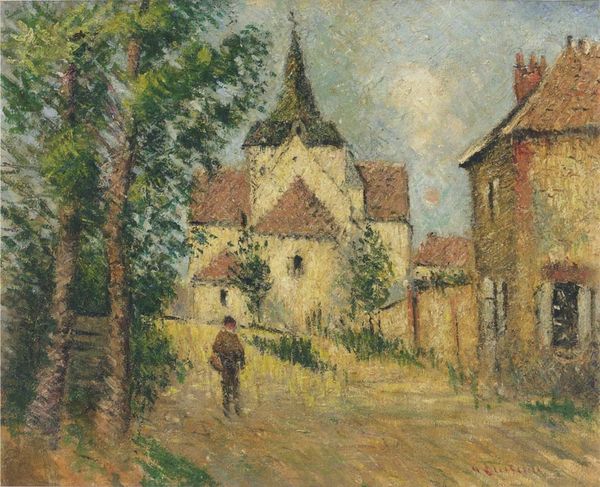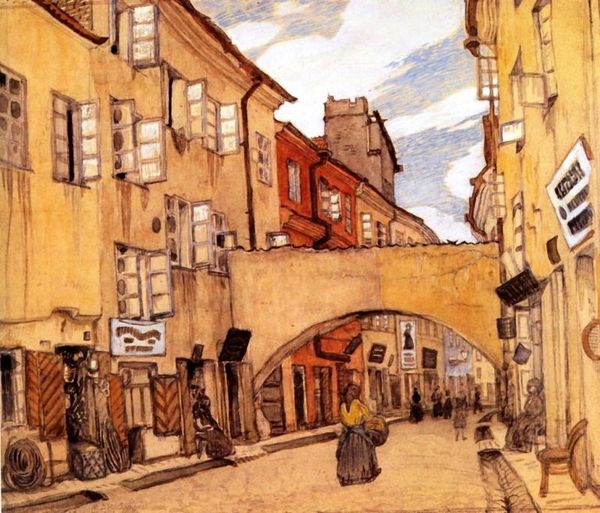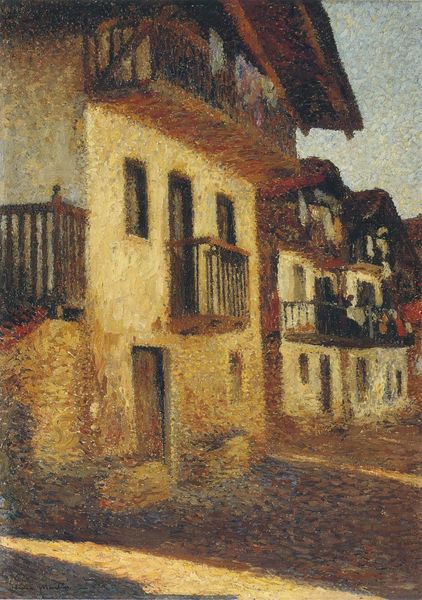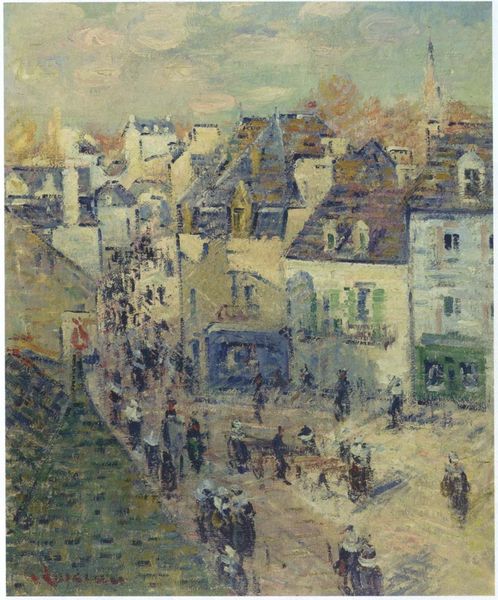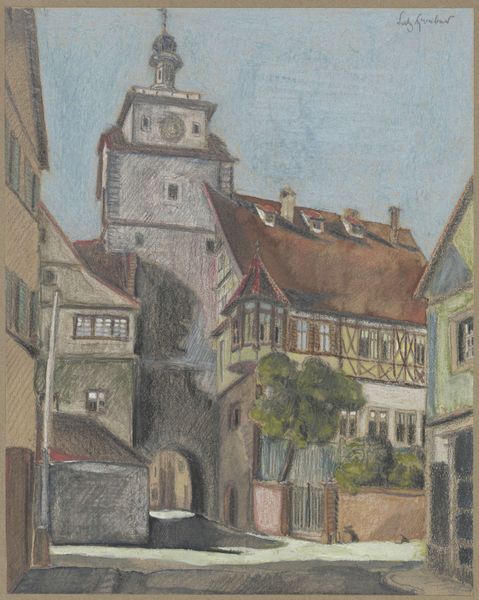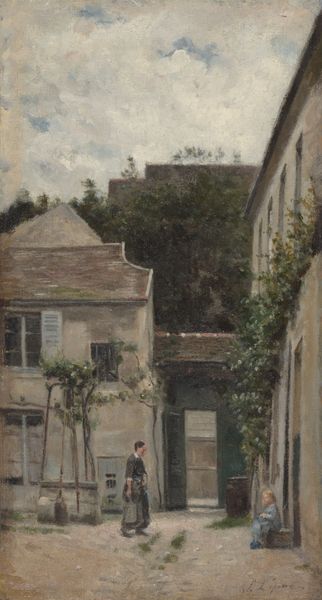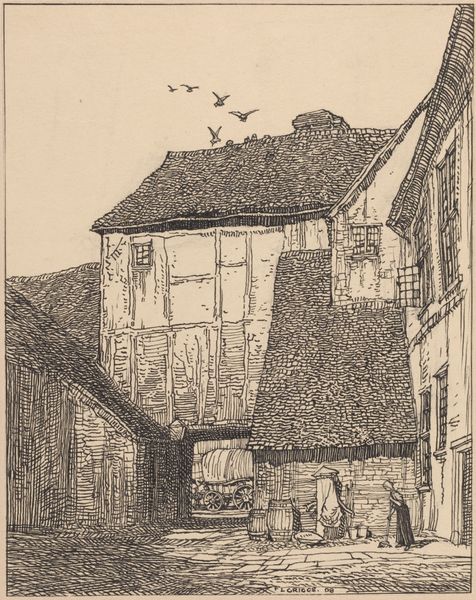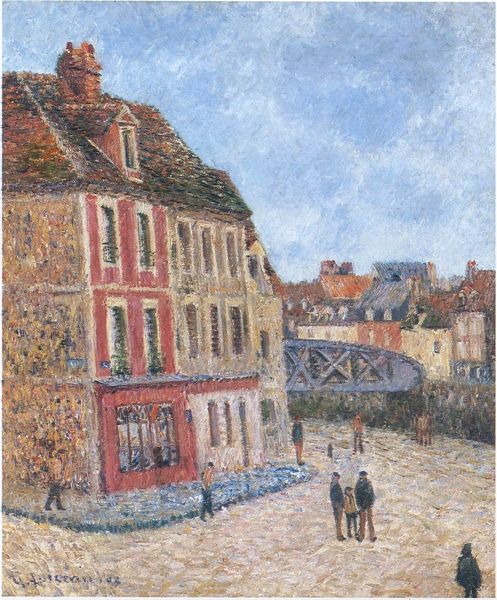
Copyright: Public domain US
Curator: Looking at "Vilno. Street." by Mstislav Dobuzhinsky, created in 1906, what strikes you most? It’s a watercolor, so delicately rendered. Editor: Desolation. Pure, melancholic desolation. The palette, the architecture… it feels utterly still, trapped in aspic. Curator: Dobuzhinsky was a member of Mir iskusstva, the World of Art movement, which often looked to the past for inspiration. Vilno, now Vilnius, Lithuania, was part of the Russian Empire then, a place undergoing massive social and political change. Does that historical context add to your initial impression? Editor: Absolutely. Knowing the context highlights the contrast, doesn’t it? This isn't just a pretty picture of an old street; it's a quiet scream against imperial decay. That lone figure by the fence – are they a witness, or a prisoner? The broken windows of the building definitely give a sense of unease, suggesting social tensions simmering beneath the surface. Curator: I think he's capturing a sense of impermanence. Look at the texture of the walls, the slightly overgrown cobblestones. Everything is slowly returning to the earth. It feels intensely personal, almost like a memory fading. Editor: The perspective reinforces that fading quality, almost drawing us down the street. But the fence in the foreground acts as a kind of visual barrier. Are we invited in, or kept out? Curator: Perhaps both? Dobuzhinsky often imbued his cityscapes with psychological weight. This painting reminds me of how memory itself works—fragments seen through a veil of time. Editor: Indeed, and isn’t that dilapidated building representative of broken power structures, of imperial rot? The romantic depiction almost mocks the scene. It highlights the ugliness beneath the surface of romantic nationalism. Curator: I think he understood that beauty and decay could coexist, perhaps even be interdependent. "Vilno. Street." invites us to look beyond the surface, to see the layers of history and emotion etched into a place. Editor: A powerful work! For me, the piece resonates as a sobering commentary on lost empires and fading grandeur. The desolation whispers volumes about the lives caught in between. Curator: It is that quietness that allows one to contemplate. It is a thoughtful exploration of a specific time and place, offering us a chance to reflect on our own relationship to the past.
Comments
No comments
Be the first to comment and join the conversation on the ultimate creative platform.
